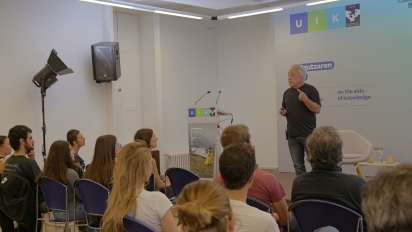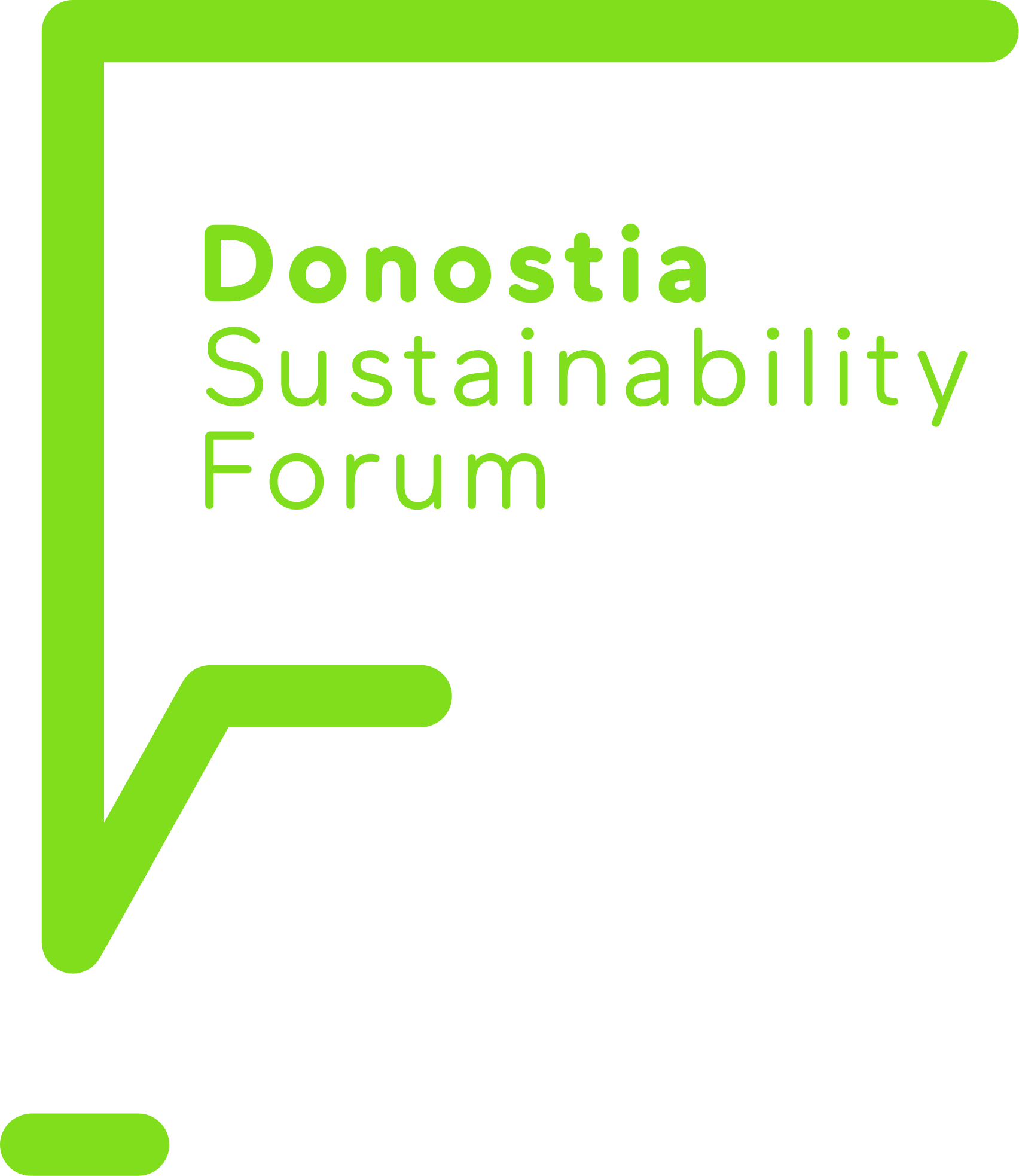Manu Soto Lopez: Cetacean Strandings and Sea Turtle Routes in the Bay of Biscay
Manu Soto Lopez is Professor of Cell Biology, director of Plentiza Marine Station and head of the Basque Cetacean Strandings Network, and monitors the routes of sea turtles as well; he gave detailed explanations of his work, but in a way that everybody could understand. In fact, he stressed right from the start that one of his goals is for people to know what – and what not – to do if they come across a stranding.

He gave as an example a stranding that had occurred at Zarautz beach the previous week. A dead dwarf or pygmy sperm whale was washed up. There were few people there, but they did know that they had to call the 112 emergency number; and that is what they did.
The whale had just died and was therefore very suitable for the work of the scientists, as it meant that they could take high quality samples. They had just received the result of the post-mortem: its stomach was filled with plastic. Soto left to no doubt to that being the cause of death. ‘Humans are at the origin of plastics. That must make us think about what we do with our rubbish’, he added.
Sample bank
He explained that the samples are kept in a bank, ‘in the same way that documents are kept in libraries’. They are thus also available for scientists from elsewhere to use the samples in their research. In fact, crossing data and gathering input from different fields is essential to draw conclusions. In the case of cetaceans, it should be remembered that they travel huge distances in the sea; therefore, research is carried out with other centres to complete the map.
People usually report where a stranding has occurred. He repeated the importance of calling 112 and also issued a warning: ‘do not touch or get too close’. If the animal is dead, it could have a contagious disease, and if it is alive, it can be dangerous: ‘They are wild animals. Seals, for example, often come to rest on shore. If you reach out to touch them, they can be scared and bite’.
Interdisciplinarity and teamwork
Once the emergency services have received the call, they arrive at the stranding within an hour and a half or two hours. ‘We have sometimes had to cut up the animal on site, because it did not fit into the van. We can transport up to 300 kilos and a length of 2.5-3 metres. The corpse is particularly apt if it has just died. Before taking it to the centre, we freeze it until the veterinary surgeon arrives and carries out the post-mortem. We take samples from all the organs and we examine them to analyse the cause of death. However, the chemical analyses are performed at the CSIC centre in Galicia. If the corpse is decomposing, quality samples cannot be taken’.
He explained that samples are also taken from the brain. In fact, some UPV/EHU researcher are using samples from the brain bank to research mental illnesses (epilepsy, neuro-degenerative diseases). Thus, they are working with those researchers to study whether similar pathologies can be found in the brain of cetaceans: ‘the hypothesis is that neuro-degeneration may be the reason they lose their sense of direction, and may be the cause of the stranding. We do not know, but we are analysing it’.
Furthermore, they are working with researchers in the field of Pharmacy. They have also discovered some unusual findings: they have measured traces of banned drugs here in the tissue of the animals, along with traces of other illegal and legal drugs. Where do they come from? According to Soto, they are very likely the remains of consumption by cruise passengers.
On the other hand, the majority of strandings are usually dolphins: the common and the short-beaked common dolphin, along with the Atlantic bottlenose dolphin, although less frequently. Strandings usually happen in February and March, and the majority of them in Donostia/San Sebastián. The help of researchers from other fields – physicists, meteorologists… – is needed to discover why the strandings are more frequent at that time and why they happen more in one place than another. He suggested that artificial intelligence may also be helpful to analyse all the data together and produce forecasts.
He ended by recalling what to do in the case of seeing a stranding: call 112 and if the animal is alive, do not try to return it to the sea. It may be harmful both to the cetacean and to the people trying to help it. And he added: ‘Do put post anything on social media as that will attract people to the place of the stranding. And that is not helpful. It is not good for the animal’s health or for our work. Then, when we’ve finished, published everything you want, that’s great’.
Following sea turtles’ route
They also monitor the turtles that need help. Donostia/San Sebastián Aquarium supports them in that work, as the Aquarium staff look after the turtles until they recover and are ready to be released.
Some of those turtles are monitored by fitting them with a GPS transmitter: ‘We put a small transmitter on their back and which does not affect their normal behaviour. Satellites receive the signal from the transmitter, and that tells us where they roughly are. They need to be on the sea surface for that to happen’.
As he explained, the turtles that are found here are usually young, but it is not clear where they come from. They know that they come from warmer waters, but more genetic studies are known to establish whether them come from the Caribbean, South Africa or elsewhere.
Turtles take very different routes, as could be seen from the images shown. His hypothesis is that water temperature is very influential, along with food (fish or jellyfish). They also take the temperature of the water surface into account to confirm it.
When all is said and done, that is the work of science: gathering all the data related to the situation and analyse them together to draw conclusions. Soto stressed at least one conclusion: we are responsible for caring the sea and marine creatures, and it is up to us to pressure the authorities to take effective measures to restore the environment.



